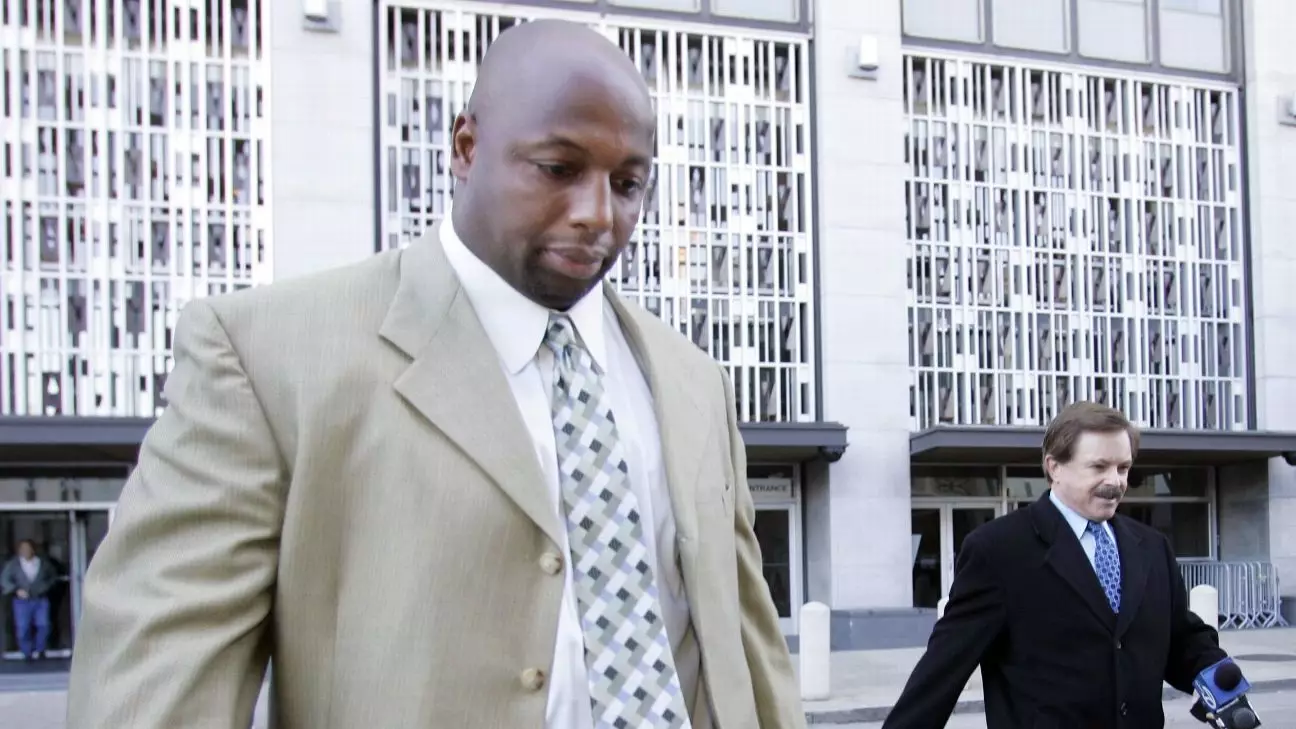The case of Dana Stubblefield, once a celebrated NFL player, underscores a significant intersection of race, law, and public perception in the American judicial system. Initially convicted of rape in 2020, Stubblefield’s conviction was vacated by an appeals court in December 2024 due to racial bias that permeated his trial. Despite this reversal, his journey towards true freedom remains fraught with hurdles, as a California superior court judge recently declined to grant bail while the appeals process remains active.
Stubblefield’s legal troubles began when he was accused of raping a developmentally disabled woman in 2015. Prosecutors alleged that he lured her to his residence under the pretense of offering a babysitting job. During the trial, Stubblefield’s defense articulated that the sexual encounter was consensual, arguing that the woman accepted payment for sex. However, the jury found him guilty, leading to a harsh sentence of 15 years to life in prison. This conviction raised significant questions about consent, power dynamics, and the treatment of vulnerable individuals within the legal framework.
The original trial, conducted in a charged environment during a time when discussions around race and justice were at the forefront of public discourse, has been critically examined since the appeals court’s ruling. The Sixth District Court of Appeal determined that racial bias played a pivotal role in the prosecution’s case, asserting that the use of “racially discriminatory language” violated the California Racial Justice Act—a groundbreaking piece of legislation passed in the aftermath of George Floyd’s tragic death.
The appeal process is inherently complex, and the resulting remittitur—a document that returns control of the case to the lower court—has not yet been issued, complicating Stubblefield’s potential release. Judge Hector Ramon stated that until the appellate court formally reassigns jurisdiction, he lacks the authority to alter Stubblefield’s custody status. This ruling emphasizes a significant aspect of the justice system: the procedural intricacies can often overshadow the presumed innocence of individuals awaiting final judgment.
Stubblefield’s legal representatives argued passionately for his release, positing that their client is, in essence, legally innocent following the vacating of the conviction. Attorney Ken Rosenfeld’s words outside the courtroom encapsulated the frustration felt by Stubblefield’s defense team: a “legally innocent man” remains locked away, caught in a web of judicial bureaucracy. Their appeals for bail rest on the notion that the case against him has significantly weakened; yet, the judicial response remains tethered to procedural formalities.
The case has garnered significant media attention, raising larger questions about systemic issues within the judicial system, particularly as they relate to race. The implications of overturning such a high-profile conviction echo beyond Stubblefield’s individual case; they highlight potential flaws in the legal processes that can undermine fairness and justice. Public opinion can easily sway during cases that become emblematic of broader societal issues, such as racial discrimination and the treatment of marginalized populations.
Some voices, particularly within the prosecutorial community, have voiced opposition to the possibility of Stubblefield’s release, asserting that the original conviction was justified. This reflects a divide not just in opinion but in how society perceives the complexities of race, power, and justice.
As the legal proceedings continue to unfold, the case of Dana Stubblefield serves as a crucial reminder of the fragility of justice in America. The intersection of race, legal rights, and public perception demands focus and scrutiny, particularly in an era where systemic inequality is increasingly being challenged.
The resolution of Stubblefield’s case will likely have lasting impacts, influencing conversations around racial bias in the legal system and shaping future judicial strategies. His journey reflects broader societal tensions and the necessity for a fair and equitable approach to justice—one that is deeply aware of the implications of race and the historical context of legal decisions. As the community, legal experts, and advocates ponder Stubblefield’s fate, they raise larger questions that speak to the heart of criminal justice in contemporary America.


Leave a Reply